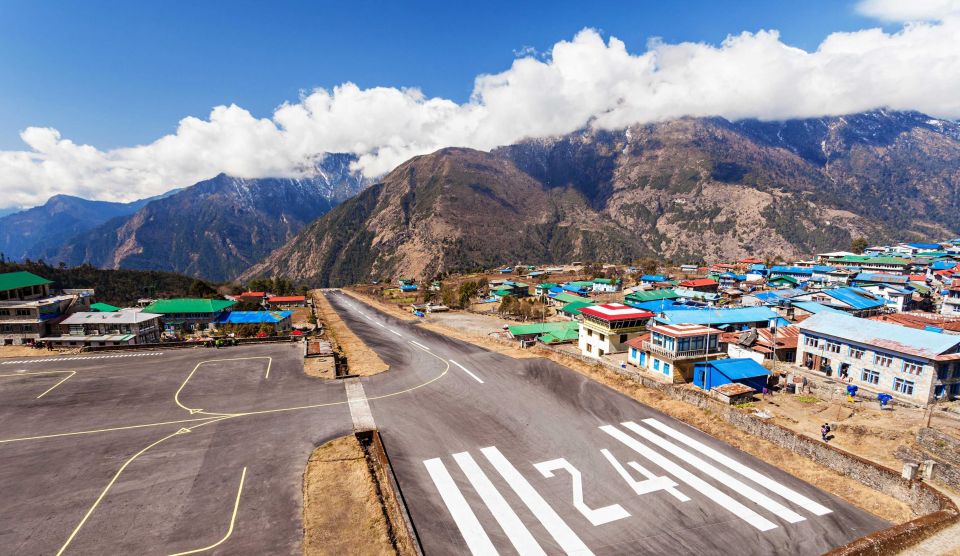
Nepal’s tourism and aviation sectors are dejected that Parliament’s five-year term is ending on September 18 without passing long-pending civil aviation bills that could severely impede their growth and do long-term damage.
Insiders say the hospitality industry has been pouring billions into new properties amid post-Covid optimism that tourist arrivals would take off, but failure to pass the bills could stop recovery in its tracks.
Passing legislation to split the Civil Aviation Authority of Nepal into two entities—service provider and regulator—will fulfil a key requirement of the European Commission. This will hasten Nepal’s removal from its air safety list, allowing Nepali airlines to fly to Europe and bring more tourists, but the government is unwilling to break up the aviation agency and loosen its grip on it, insiders say.
Nepal’s image remains tarnished in international aviation because of its poor safety record. An audit team of the European Union Aviation Safety Agency (EASA), an agency of the European Union (EU) with responsibility for civil aviation safety, will be conducting an internal audit of Nepal’s aviation.
“The team is scheduled to begin the audit from October 5,” said an unnamed top official at the Civil Aviation Authority of Nepal.
“The recent development shows Nepal will remain on the air safety list for more years, as Nepal has wilfully declined requests by various global aviation watchdogs to end the ongoing conflict of interest at the Civil Aviation Authority of Nepal that has been performing a dual role and hampering safety. This will cost Nepal in the long run.”
He did not give further details or disclose the plan of the audit team.
In August, the United Nations aviation watchdog International Civil Aviation Organisation too had formally asked Nepal to split the civil aviation body into two entities.
The separation is a crucial organisational reform agenda which has been a work in progress for the last one and a half decades.
Successive tourism ministers and political leaders have been constantly pledging to the diplomatic community that Nepal will pass the bills and start the process to have the country removed from the bad books of the European Commission.
In December 2013, the European Commission imposed a blanket ban on Nepali airlines from flying into the 27-nation bloc after the September 2012 crash of Sita Air Flight 601 at the Manohara river near Kathmandu airport.
Nineteen people, including seven British citizens, died in the disaster.
A top official of a private airline said that if Nepal continued to remain on the “air safety list” of the European Commission after the audit, after 10 years, it would spell a disaster for the entire tourism industry.
“If the ban remains in place, we don’t have any option other than to retaliate against the government, whose mandate is to have Nepal removed from the air safety list or the EU ban. The government should feel ashamed that we have been on the air safety list for 10 years.”
Kathmandu-based diplomatic missions are too concerned.
Recently, high-level officials from the American and Australian embassies met Pradeep Adhikari, director general of the Civil Aviation Authority of Nepal, in his office and asked him about the current status of the bills.
“Adhikari has no answer. Instead, he has been complaining about the EU ambassador to every delegate he meets. That’s weird,” the official said.
“Adhikari has even rejected outright the request to attend a meeting held by the EU at Nepal’s Foreign Ministry recently. The delegation of the European Union to Nepal had invited Adhikari to speak on the civil aviation bills.”
The Tourism Ministry and the Civil Aviation Authority are on the same wavelength and both seem least bothered to pass the bills. The proposed pieces of legislation to separate the organisation have been gathering dust in Parliament for four years for reasons unknown.
“Someone has to give us a logical answer why they have been kept on hold. What’s the reason behind it,” said the airline official.
Amid the ongoing controversy, civil aviation chief Adhikari flew off to Brussels, Belgium to take part in SAFE 360° (Safety in Aviation Forum for Europe 2022) on Sunday morning. Few people in the industry know about his trip, which is particularly based on offering an all-round perspective on aviation safety.
“The chief has informed a few members of his office that the objective of his visit is to convince the European Commission to lift Nepal from the air safety list. But he is lying. Actually, he has no agenda,” said another top official at the civil aviation authority who spoke on condition of anonymity.
Most officials aren’t willing to speak against the director general because of possible repercussions. “He has kept the office and the industry in a tight grip,” the official said.
The Post was unable to establish contact with Adhikari.
After the SAFE 360° meeting, Adhikari is scheduled to take part in the 41st ICAO triennial assembly beginning on September 27 in Montréal, Canada.
“At both these meetings, Adhikari will need to speak on the progress made in the country’s aviation safety issues. But he seems to be in a tight spot as he is not in favour of splitting his organisation to ensure safety,” the official said.
Former civil aviation director generals say the government’s decision not to pass the bills is a “crime against public safety”.
The government first announced the proposal to split the civil aviation body in its Three Year Interim Plan 2007-08 to 2009-10, which stated, “In the context of the completion of the study on the institutional strengthening of the Civil Aviation Authority of Nepal, which has been working as the service provider in civil aviation, airport operator and regulator; implementation of doable recommendations suggested by the report are being considered.”
Since then, every periodic plan and policy, including the annual budget for this fiscal year, has accorded priority to separating the civil aviation body. But the plan has never been implemented.
“That’s sheer negligence. It’s been 10 years since Nepal’s aviation safety has been questioned, but no one is bothered,” said Sanjiv Gautam, former director general of the Civil Aviation Authority of Nepal. “Who will lose? The minister will not lose. The director general will not lose. It’s the country that will lose.”
The bills were passed by the upper house on August 2, 2021.
On August 2, 2021, the upper house or the National Assembly unanimously passed two bills—the Civil Aviation Authority of Nepal Bill and the Air Service Authority of Nepal Bill.
On March 1, 2022, the Parliament Secretariat included the two aviation bills in the agenda for a meeting of the lower house scheduled for March 2. There was a stunning overnight twist as the then tourism minister Prem Bahadur Ale stopped them from being tabled in the lower house for discussion.
In June, the coalition government appointed Jeevan Ram Shrestha as the new tourism minister. Days after his appointment, the new minister too spoke that the “time has not arrived to split” the Civil Aviation Authority of Nepal into regulator and service provider.
“That’s a strange remark. The minister even did not take a second opinion,” said the official at the civil aviation body.
The tourism industry has started to feel the repercussions.
“Nepali airlines are banned in EU nations. Although Nepali airlines don’t fly directly to the EU, tourists, particularly in the high-end segment, are reluctant to travel to countries that have been flagged by the aviation watchdog,” said Basanta Mishra, a senior tourism entrepreneur.
The ban also prevents direct flight connectivity plans from European countries to Nepal and from Nepal to Europe. Even the United States and Australia have been questioning the civil aviation agency about the status of the bills.
“That’s worrisome. It will kill tourism in the long run,” said Mishra. “The repercussions are already being felt.”
According to him, it will take years for China to allow its citizens to travel. “We can’t be dependent on the Asian market only.”
The private sector has invested billions in the tourism industry. “Connectivity is a major concern. If there is no direct connectivity with the US, Europe and Australia, how can we think of bringing tourists in big numbers?”
While Tourism Minister Shrestha has made it clear that establishing a regulatory body to ensure safety is not his priority, he has come up with an ambitious plan to host 3.5 million tourists annually by announcing Tourism Decade starting in 2023.
Shrestha has pledged facilitation and reforms at the policy level for the development and promotion of the tourism sector.
Binayak Shah, senior vice-president of Hotel Association Nepal, says there is no any base—in terms of policies, plan and promotion—to bring so many tourists.
“It looks that the decision has been made in haste.”
Nepal received 1.19 million tourists in 2019.
In 2020, Nepal had just launched an ambitious Visit Nepal Year campaign with much fanfare, aiming to attract at least 2 million tourists, only to have to abandon the programme after the incipient pandemic exploded into worldwide proportions.
The disastrous year ended with 230,085 arrivals. Following a difficult end to 2020, Nepal’s tourism suffered further setbacks as countries tightened travel restrictions in response to new virus outbreaks.
In 2021, the number of foreign visitors entering the country totalled 150,962.
Nepal’s tourism industry in 2021 sank to its lowest in four and a half decades and revenues hit rock bottom, making a big dent in the country’s economy.
As of August, Nepal had received 326,667 tourists. The figure is expected to touch half a million by the end of this year.
Now, the government has planned to attract 3.5 million tourists annually from next year. “It’s a lofty promise which Nepali politicians are habituated to making,” said Mishra. “The government needs to fix the problems first if it wants to bring tourists in big numbers.”












